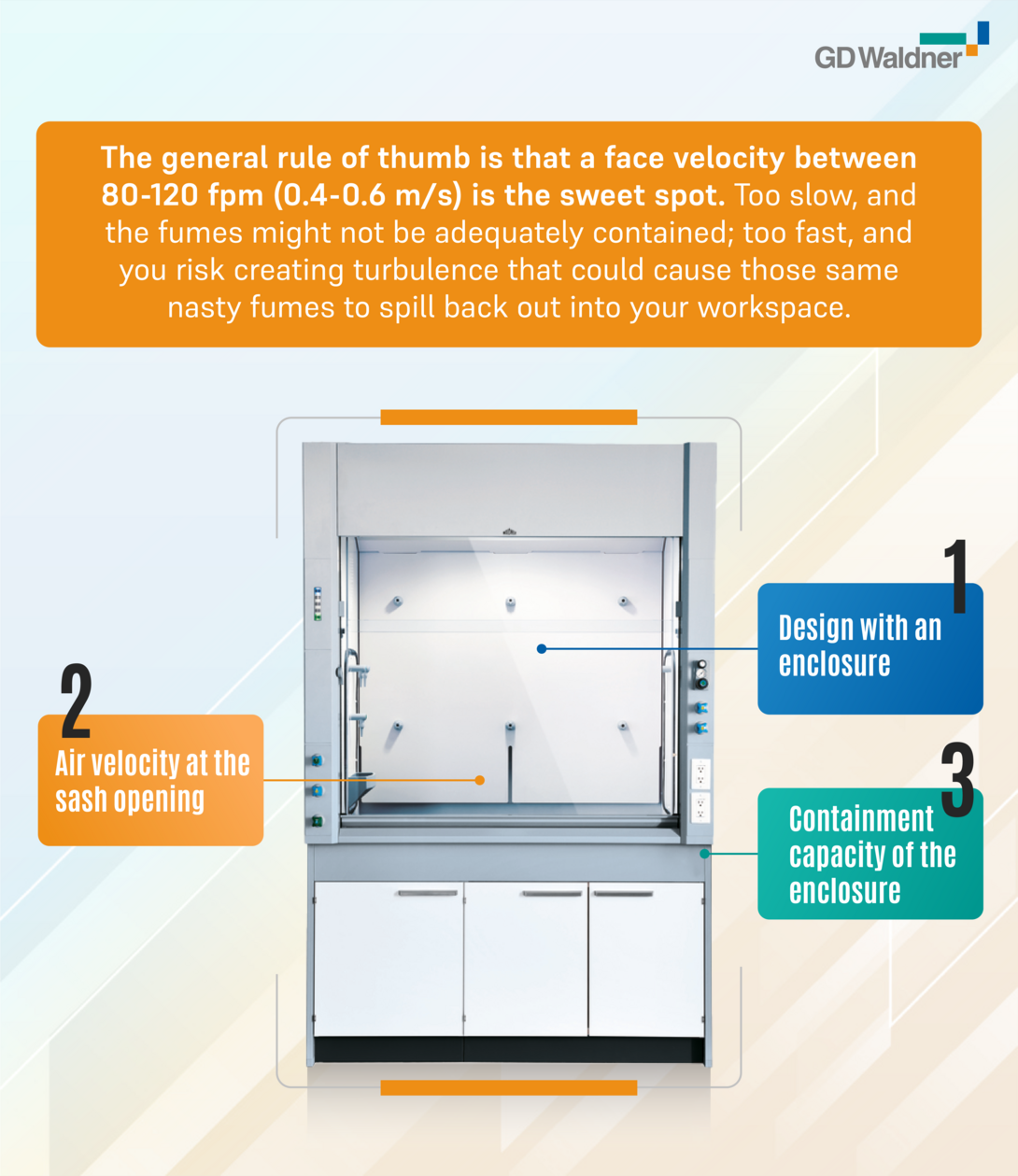Ever wondered how airspeed can safeguard your lab experiments? Let's explore the fascinating world of face velocity in fume hoods! As a key indicator of a properly operating fume hood, face velocity determines the speed at which air is drawn into the hood, safeguarding researchers from harmful gases, vapours, and particles during experiments.
“Face Velocity” is a fancy term for the speed at which air is sucked into a fume hood. It’s typically measured in feet per minute (fpm) or meters per second (m/s). You calculate it by taking the volume of air the hood’s fan pulls in and dividing it by the area of the hood’s open face (i.e., the sash opening).
Now, just as important as what face velocity tells you is what it DOESN’T tell you. Yes, it can tell you about containment. Face Velocity is a factor in containment, but there is no direct relationship between face velocity and containment. In fact, at least 70% of the hoods that fail containment testing, have acceptable face velocities.
Face velocity can’t tell you how your fume hood will perform if someone walks past it quickly, or if there’s a draft in the room, or if you’ve got a Bunsen burner or other heat source inside the hood. All of these things can cause turbulence that disrupts the hood's airflow, potentially causing fumes to escape even if your face velocity is spot on.
So, while knowing your fume hood face velocity is an important piece of the puzzle, it’s not the be-all and end-all. Keep in mind the variables in your lab environment and make sure you’re checking your hood's overall performance regularly, not just its face velocity.

